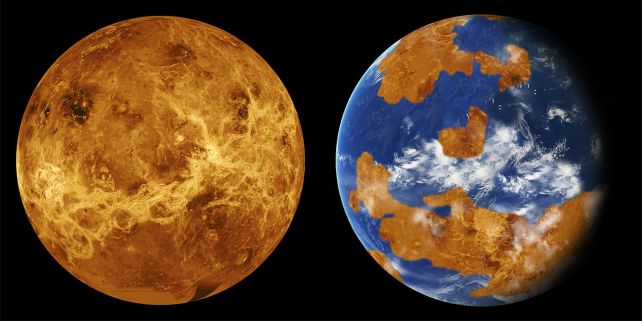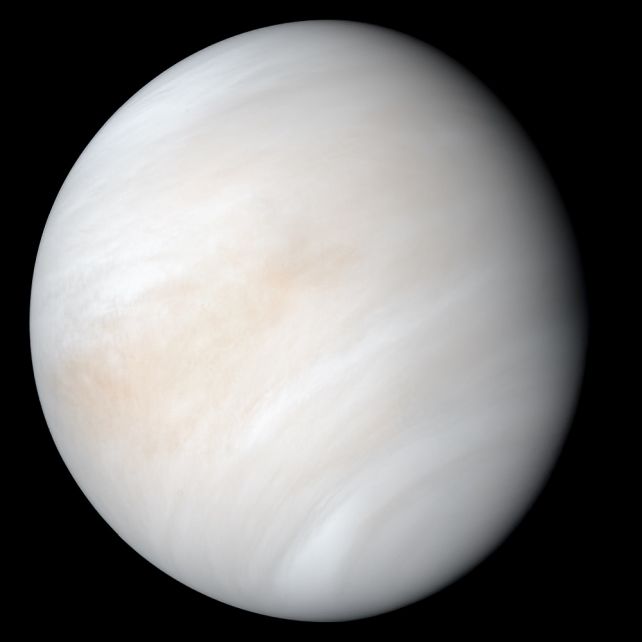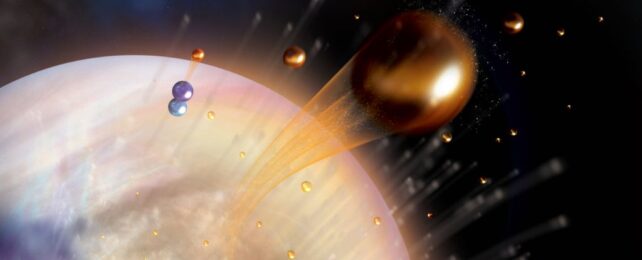Scientists believe that Venus once looked a lot more like Earth. How it evolved from that point to where it is today is a question with deep implications, not just for our own planet's future, but for the search for life outside the Solar System.
Now, researchers think they have solved a significant piece of the puzzle: the mystery of Venus' missing water.
"Venus has 100,000 times less water than the Earth," explains planetary scientist Michael Chaffin of the University of Colorado Boulder, "even though it's basically the same size and mass."
The main culprit? The new research points to a process called dissociative recombination, which sends Venus' hydrogen leaking out into space, causing the planet to lose water much faster than we previously thought.

Examining Venus and Earth side-by-side raises some very interesting questions. Along with similarities in size and mass, both planets seem more or less made up of the same rocks, with the same iron core and rocky mantle structure.
But where Earth is lush, wet, and teeming with life, Venus is very much not. Venus is choked by toxic carbon dioxide clouds that rain sulfuric acid. The surface of Venus, sculpted by volcanism, has been subjected to a runaway greenhouse effect that now keeps temperatures at an average scorching 464 degrees Celsius (867 Fahrenheit).
But the missing water remained a problem. Models for its escape from Venus (planets are leaky even at the best of times) couldn't account for the amount of water Venus should have lost, given that it should have had more or less the same amount of the stuff as Earth acquired during its formation billions of years ago.
Today, if we spread Earth's water evenly over its surface, it would create a global ocean 3 kilometers (1.9 miles) deep, a calculation known as the global equivalent layer (GEL). Venus' GEL is just 3 centimeters (1.2 inches).
The researchers, co-led by Chaffin and his colleague, planetary scientist Eryn Cangi of UC Boulder, sought to investigate this discrepancy by performing computer simulations of processes in Venus' atmosphere. And their results pointed the finger at a process that has been overlooked for 50 years: the recombination of a molecule called HCO+.

This is a positive ion consisting of hydrogen, carbon, and oxygen, formed through the combination of carbon dioxide and water, and the loss of negatively charged electrons. The team's research shows that when electrons recombine with the molecule, the hydrogen is knocked loose and sent hurtling off into space. And without the hydrogen around, water can no longer form.
This mechanism can account for nearly twice the water loss accounted for in previous theories, neatly resolving the problem of the difference between Earth's water and Venus'.
There is a little bit of a catch. The model requires quite a lot of HCO+ in the atmosphere of Venus, and to date we haven't detected any. But that could be because we haven't thought to look for it, so none of the probes sent to look at Earth's less soggy sibling have had the capability to detect it.
This, however, could be resolved in the design plans for future Venus missions.
"There haven't been many missions to Venus," Cangi says. "But newly planned missions will leverage decades of collective experience and a flourishing interest in Venus to explore the extremes of planetary atmospheres, evolution and habitability."
The team's research has been published in Nature.
